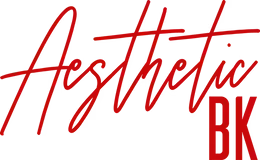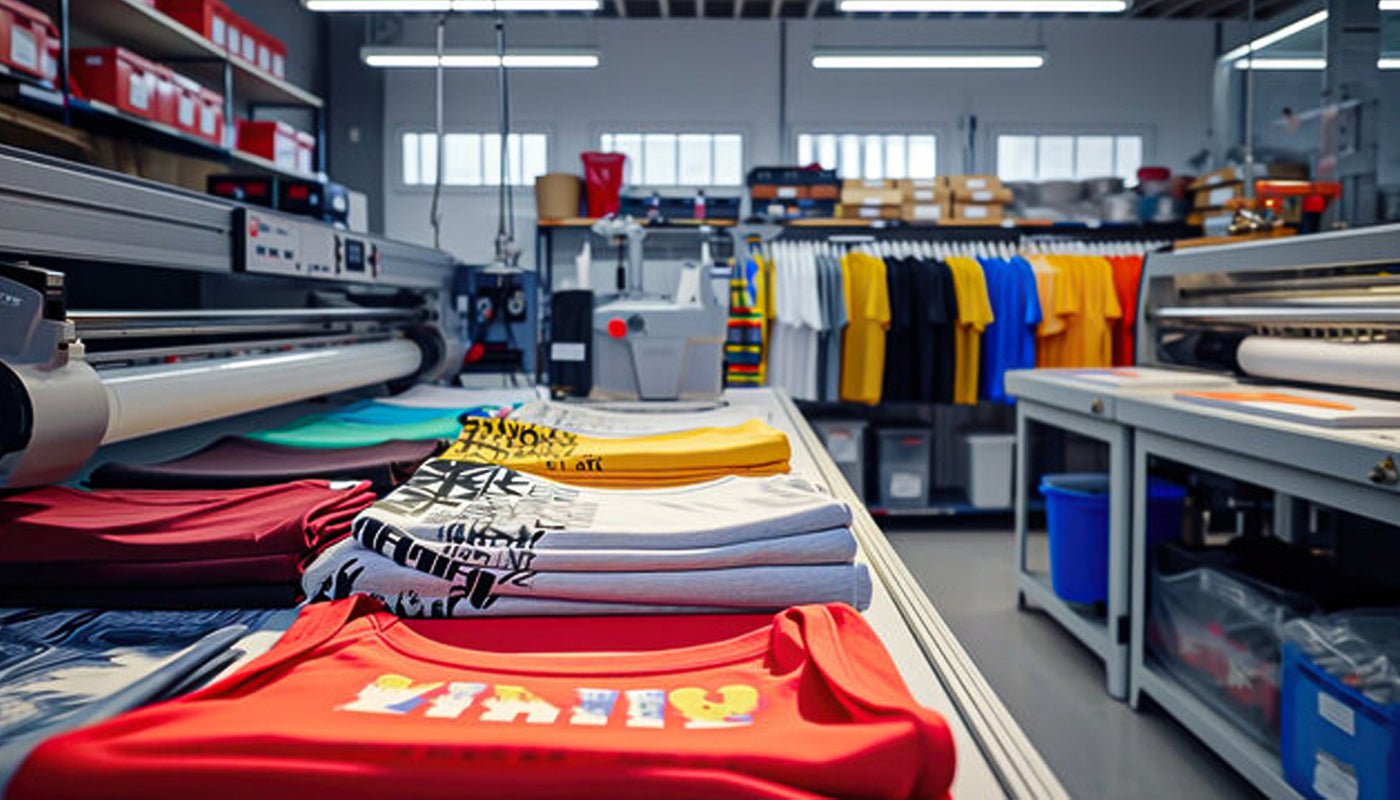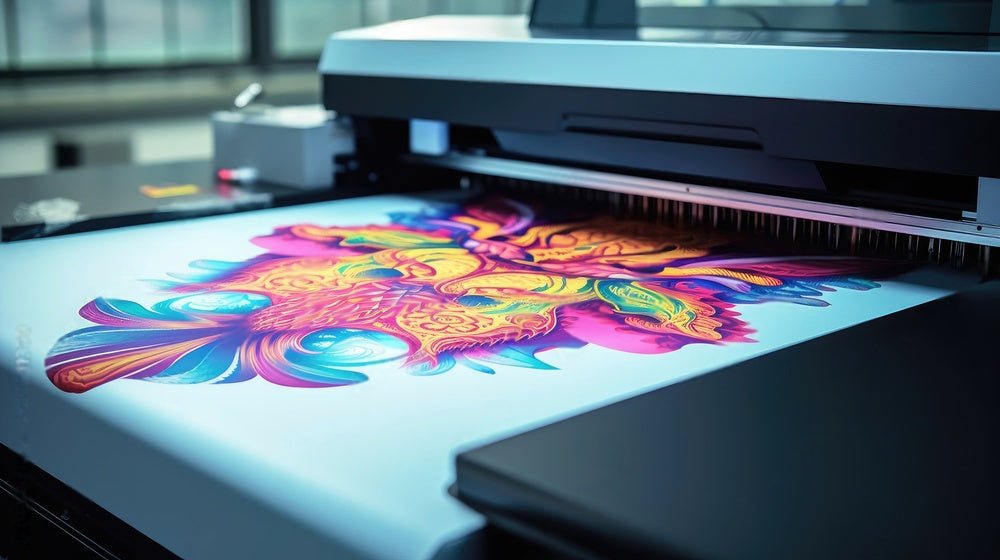Introduction
Print-on-demand apparel is a model where custom clothing—like t-shirts, hoodies, and hats—is made only after someone places an order. It’s perfect for brands, creators, and individuals who want to sell unique designs without stocking inventory or paying upfront costs.
From custom t-shirt printing to personalized gifts, POD apparel offers flexibility, low risk, and endless design options. You upload your design, pick the product, and the POD provider handles printing, packaging, and delivery.
In this guide, we’ll explain how print-on-demand apparel works, explore popular printing methods like DTF, DTG, and embroidery, and share tips to help you launch your own POD clothing line.
Key Takeaways
- Print-on-demand lets you sell custom apparel without holding stock.
- Great for launching an online t-shirt design store.
- There is a need to follow proper customization methods like DTF, DTG, and embroidery.
- There are no up-front fees and you only pay when a customer orders.
- Suitable for custom t-shirt printing and print-on-demand clothing brands.
What is Print-on-Demand Apparel?
Print-on-demand (POD) apparel is a business model where custom t-shirts, hoodies, hats, and more are printed only when someone places an order. It’s a favorite for startups, influencers, and artists who want to launch custom t-shirt printing or print-on-demand clothing lines online. With POD, you simply upload your design, choose your product, and a third-party supplier handles printing, packing, and shipping.
How does print-on-demand apparel work?
Print-on-demand (POD) apparel is a simple yet powerful way to create and sell custom clothing without dealing with inventory or upfront costs. Whether you're launching a t-shirt brand or adding merch to your existing business, POD makes it easy to get started.
Here’s how it works:
-
Create Your Design Start by designing your artwork using online tools provided by POD platforms. You can upload your own graphics, add text, or use templates to bring your vision to life.
-
Choose Your Apparel Pick the type of clothing you want to sell — t-shirts, hoodies, hats, or even tote bags. Most platforms offer a wide range of styles and colors.
-
List It for Sale Once your design is ready, you add it to your online store. You don’t need to print anything upfront — the product only gets made when someone places an order.
-
Order Fulfillment When a customer buys your product, the POD provider steps in:
Production: They print your design using methods like DTG, DTF, or embroidery.
Packaging: The item is packed professionally, often with options for branded labels.
Shipping: It’s shipped directly to your customer — no need for you to handle logistics.
This hands-off model lets you focus on what matters most: creating great designs and building your brand. It’s fast, flexible, and ideal for anyone looking to sell custom apparel online.
Benefits of Print-on-Demand Apparel for Businesses and Retailers
Print-on-demand (POD) apparel offers a smart, low-risk solution for brands and retailers looking to scale without heavy investment. One of the biggest advantages is cost-efficiency — there's no need to hold inventory or pay upfront, making it perfect for launching business merchandise or testing new designs. You can create custom apparel for brands and offer a variety of styles without worrying about unsold stock.

- 83% of print-on-demand businesses report no upfront inventory costs.
- 30% of POD businesses have scaled their operations within the first year due to easy integration with ecommerce platforms.
- 58% of consumers say they are more likely to buy from brands that offer personalized or customized products.
- Over 70% of POD business owners report significant savings on warehouse and fulfillment costs due to the drop-shipping model.
- 65% of customers expect their orders to be delivered within 3–5 days, making fast production and shipping times essential.
- 45% of POD sellers expand their product offerings within the first six months, adding everything from apparel to accessories.
- 54% of customers are willing to pay more for eco-friendly products.
Minimal Upfront Investment
POD eliminates the need for large capital investments in inventory, equipment, or storage. Businesses can start by simply uploading designs and connecting with a POD provider, allowing for a low-risk entry into the apparel market.
No Inventory Management
Since products are created only after an order is placed, there's no need to manage or store inventory. This particular approach helps in reducing the overhead cost and also reduces the risk of unsold stock.
Scalability and Flexibility
POD services enable businesses to scale operations seamlessly. Whether it's expanding product lines or entering new markets, companies can adjust offerings without significant logistical challenges.
Rapid Product Testing
Businesses can quickly test new designs or products with minimal risk. If a particular design doesn't resonate with customers, it can be modified or removed without financial loss.
Customization and Personalization
POD allows for high levels of product customization, catering to niche markets and individual customer preferences. This personalization can enhance customer satisfaction and loyalty.
Reduced Time-to-Market
With streamlined production processes, businesses can bring new products to market faster, capitalizing on current trends and customer demands.
Focus on Core Business Activities
By outsourcing production and fulfillment, companies can concentrate on design, marketing, and customer engagement, driving business growth and innovation.
Key Print-on-Demand Apparel Printing Methods Explained
1):- DTF Printing
DTF (Direct-to-Film) printing is a modern method used in custom apparel where designs are printed onto a special film and then transferred onto garments using heat and pressure. Unlike traditional methods that print directly onto fabric, DTF creates a design on film first, offering sharp detail and vibrant colors on nearly any fabric type. This makes it a popular choice for DTF apparel like t-shirts, hoodies, caps, and more.
Pros and cons of DTF printing
Before you start, let’s break down the pros and cons of DTF printing. It’s versatile, durable, and colorful — but it does have a few trade-offs.
| Pros | Cons |
|---|---|
| Works on all fabric types (cotton, polyester, blends) | Slightly heavier feel on garments than DTG prints |
| Bright, vibrant colors with excellent detail | Requires adhesive powder, which can be messy |
| No pre-treatment needed (unlike DTG printing) | May not handle fine gradients or soft fades as well |
| Highly durable and resistant to cracking or fading | Initial setup can be costly for small businesses |
| Handles complex designs well | Less eco-friendly than DTG inks |
DTF apparel is great for businesses that need fast, reliable, and full-color custom prints. It’s ideal for:
- Promotional clothing and uniforms
- Limited edition drops or seasonal prints
- Designs with high contrast and solid colors
- Apparel for events, clubs, or small retail brands
2):- DTG Printing
DTG (Direct-to-Garment) printing is a modern digital printing method where designs are printed directly onto fabric using specialized inkjet technology. The DTG printing process works in the manner of regular printing. A pre-treated garment (usually cotton) is loaded into the DTG machine, and the printer sprays water-based, eco-friendly inks directly onto the surface. After printing, the design is cured using heat, making it soft to the touch and long-lasting.
Advantages of DTG printing over traditional methods
- High-quality, vibrant prints: DTG captures intricate details, smooth gradients, and lifelike images with precision.
- No setup or screens required: Unlike screen printing, there’s no need for stencils or bulk runs.
- Fast turnaround: Great for one-off custom orders or online store fulfillment.
- Eco-friendly: DTG uses water-based inks with minimal waste.
Direct-to-garment printing is especially favored for artists, small businesses, and brands targeting niche or personalized markets.
Ideal fabrics and garments for DTG printing
While DTG can work on some blends, it performs best on:
- 100% cotton garments – ensures proper ink absorption and vivid color.
- Light-colored fabrics – though white ink is used for dark garments, light fabrics yield brighter results.
- Flat-surfaced apparel – like t-shirts, baby onesies, and sweatshirts without zippers or seams.
Also Read: DTG Printing Explained: Complete Guide For 2025
3):- Embroidery
Embroidery in apparel printing refers to the process of stitching a design, logo, or text directly onto fabric using needle and thread usually done by computerized embroidery machines. Unlike printed methods like DTG or DTF, embroidery doesn't use ink. This technique is widely chosen for adding logos or designs to items like polos, caps, jackets, work uniforms, and other corporate clothing. Since it uses thread, Embroidery printing is known for its durability — it won’t fade, peel, or wash out over time.
Types of embroidery techniques used in POD apparel
The following table shows the different embroidery techniques used in print-on-demand apparel:
| Embroidery Technique | Description | Best Used For |
|---|---|---|
| Flat Embroidery | Stitches lay flat on the fabric surface; clean and sharp finish | T-shirts, polos, caps, simple logos |
| 3D Puff Embroidery | Raised, foam-filled stitching for a 3D effect | Snapback hats, hoodies, bold logos |
| Appliqué Embroidery | Fabric patches sewn onto the garment with embroidery over the edges | Sweatshirts, varsity jackets, fashion designs |
| Chenille Embroidery | Made with looped yarn for a soft, velvety texture that adds depth and style. | Letterman jackets, upscale branding |
| Sequin Embroidery | Embeds sequins into the design for shimmer and visual texture | Fashion-forward apparel, dancewear |
| Satin Stitch Embroidery | Smooth, continuous stitching technique for lettering and outlines | Corporate uniforms, monograms, promotional apparel |
| Tackle Twill Embroidery | Cut fabric pieces are stitched onto garments, often combined with embroidery | Sports jerseys, bold athletic-style designs |
Best use cases for embroidered apparel
Below is a table outlining the top use cases for embroidered apparel and why it works best in each scenario:
| Use Case | Why Embroidery Works Best |
|---|---|
| Corporate Uniforms | Embroidery provides a refined, professional finish and maintains its quality even after repeated laundering. |
| Branded Hats & Caps | Ideal for logos using flat or 3D puff embroidery — crisp, clean, and long-lasting. |
| Polo Shirts | A go-to choice for businesses, golf teams, and events — subtle and stylish branding. |
| Team & Sportswear | Durable stitching resists wear and tear; great for jerseys and warm-ups. |
| Workwear & Safety Gear | Perfect for rugged use — embroidery holds up better than printed designs on heavy fabrics. |
| Event Giveaways & Promotions | Adds premium value to promotional products like tote bags, caps, or jackets. |
| Luxury & Fashion Apparel | Techniques like appliqué or chenille add a designer touch to high-end clothing lines. |
| School & College Merchandise | Popular for letterman jackets, backpacks, and club apparel — timeless and durable |
How to design your own t-shirt for print-on-demand?
Designing your own t-shirt for print-on-demand is a fun and strategic way to express your creativity or build your brand. Start by identifying your audience or personal style. Think about what message, emotion, or visual you want to convey. Whether it's a catchy quote, illustration, or logo, the design should align with your goals. Design custom t-shirts with a clear theme, color palette, and layout to ensure your t-shirt stands out.
Tools for designing your own t-shirts and apparel online
You don’t have to be a pro designer to make eye-catching t-shirt designs these days. There are tons of easy-to-use tools online that make the process simple and fun. Platforms like Canva, Placeit, and Crello give you ready-made templates and drag-and-drop features so you can create amazing designs without the technical hassle.
How to Pick the Perfect Design for Your Brand or personal use
Picking the right design starts with knowing who you’re designing for and why. If you’re creating branded merchandise, stick to a consistent style—think cohesive themes, typography, and color palettes that represent your brand’s personality.
Keep your apparel looking professional by balancing visuals, using easy-to-read fonts, and ensuring good contrast between text and background.
Once your design style is set, the next step is finding the right market for it. Explore our guide to popular print-on-demand niches to discover the audiences where your designs will stand out and sell best.
Best practices for creating print-ready artwork
To ensure your design prints correctly, always use high-resolution files (300 DPI or higher), and export in formats like PNG with a transparent background. Convert text to outlines to avoid font issues, and make sure your design fits within the recommended print area of the shirt. Steer clear of intricate gradients or very fine lines if you’re uncertain how they’ll appear once printed on fabric. Following these steps will help you design custom shirts that look great in real life and are ready for any print-on-demand platform.
Print-on-Demand Apparel for Consumers: Personalization and Gifts
Print-on-demand (POD) apparel isn't just for businesses — it's a game-changer for individuals too. Whether you're celebrating a special moment, expressing your creativity, or just want to wear something that’s truly “you,” personalized t-shirts and hoodies make it easy. POD platforms let you customize your own text, graphics, or photos onto apparel — perfect for birthdays, reunions, anniversaries, or just because. You don’t need to order in bulk or deal with long lead times. If you’re aiming to craft personalized gift apparel, POD provides a quick and budget-friendly way to create memorable pieces that truly stand out.
How to start a print-on-demand apparel business

Starting your POD apparel store is a straightforward process that doesn’t require upfront inventory costs or complicated logistics. To begin, choose a print-on-demand for an ecommerce platform like Printful, Printify, or Teespring. After selecting your platform, focus on creating and uploading unique designs that reflect your brand's style. You can easily create designs using online tools like Canva or Adobe Illustrator.
The best platforms to sell custom apparel online
If you're looking to start an online clothing brand, selecting the right platform is key to success. Here are some of the best platforms to sell custom apparel online:

- Shopify - Approximately 11.4% of all Shopify stores engage in print-on-demand (POD) operations.
- Etsy - Etsy boasts 96.6 million active buyers and 8.8 million active sellers.
- Big Cartel Approximately 21.7% of Big Cartel stores sell apparel products.
- TeeSpring Operates on a print-on-demand basis, allowing creators to design and sell custom apparel without upfront costs.
What to consider when choosing a print-on-demand apparel provider?
When choosing a POD provider, look at factors like print quality, cost, delivery speed, and support. Ensure the provider offers high-quality printing, reasonable pricing, quick delivery, and responsive support. Check POD service reviews to assess reliability.
Quality
Look for POD services that use quality printing methods like DTG or DTF. Ensure they offer durable, comfortable fabrics and consistent print results. Read POD service reviews to gauge quality.
Price
Understand the base cost, print charges, and shipping fees. Compare pricing structures between providers to ensure you're getting the best value without sacrificing quality.
Turnaround Time
Quick turnaround times are essential for customer satisfaction. Check production and shipping times to ensure orders are fulfilled promptly, especially for time-sensitive events.
Customer Service
Choose a POD provider with responsive customer service, offering support channels like chat, email, or phone. Check POD service reviews to assess how they handle issues.
The Future of Print-on-Demand Apparel
The future of custom apparel is bright, with several exciting trends shaping the industry. As consumers become more eco-conscious, eco-friendly POD clothing is gaining traction. Many POD providers are adopting sustainable practices, such as using organic cotton or eco-friendly inks. Additionally, trends in POD fashion point to more personalized and niche designs, as customers demand unique products that reflect their identity.
Industry Trends to Watch for (Sustainability, Eco-friendly Apparel)
- Sustainability is at the forefront of the print-on-demand apparel industry. As consumers demand more ethical and eco-friendly options, POD providers are shifting towards using organic, recycled fabrics and sustainable printing methods.
- Expect to see a rise in eco-friendly POD clothing, with more options for environmentally conscious customers.
- Brands that incorporate sustainable practices into their POD model will appeal to a growing market segment focused on reducing environmental impact.
Innovations in DTF, DTG, and Embroidery Technologies
As DTF , DTG , and embroidery technologies continue to evolve, the print-on-demand industry is seeing remarkable innovations. DTF printing offers vibrant colors and durability on a range of fabrics, making it a popular choice for custom apparel.
How Customization and Personalization Are Shaping the Future of Fashion
Personalization is a key driver in the future of fashion. Customers are increasingly seeking apparel that reflects their individuality, and customization is at the heart of this demand. From custom t-shirts to personalized hoodies, POD services are enabling businesses to offer unique products without holding large inventories.
Also Read: Most Common Print on Demand Mistakes and How to Avoid Them
Conclusion
Print-on-demand apparel offers endless opportunities for businesses and consumers alike. It allows brands to offer custom apparel without worrying about inventory or upfront costs. With growing trends in sustainability, technological innovations, and an increasing demand for personalized fashion, POD is the ideal solution for anyone looking to enter the fashion market or add a unique touch to their wardrobe.




5 comments
📊 + 1.788507 BTC.GET - https://yandex.com/poll/enter/BXidu5Ewa8hnAFoFznqSi9?hs=b32ef1a8b08dd6c9ac187b1b38fc3a38& 📊
4tkr94
* * * <a href="https://www.motorolapromociones2.com/index.php?1gfgs9">Unlock Free Spins Today</a> * * * hs=b32ef1a8b08dd6c9ac187b1b38fc3a38* ххх*
cbkys7
* * * Claim Free iPhone 16: https://www.motorolapromociones2.com/index.php?1gfgs9 * * * hs=b32ef1a8b08dd6c9ac187b1b38fc3a38* ххх*
cbkys7
📭 OYNAYIN VE KAZANIN! BUGÜN SADECE %150 PARA YATIRMA BONUSU, 80 FREESPIN VE %20 CASHBACK! OYNA > https://yandex.com/poll/enter/BXidu5Ewa8hnAFoFznqSi9?hs=b32ef1a8b08dd6c9ac187b1b38fc3a38& 📭
gb6lun
🏷 + 1.573830 BTC.GET - https://yandex.com/poll/5JjqQt7R61CTYdYVd17t6p?hs=b32ef1a8b08dd6c9ac187b1b38fc3a38& 🏷
yu88j7
Leave a comment
This site is protected by hCaptcha and the hCaptcha Privacy Policy and Terms of Service apply.